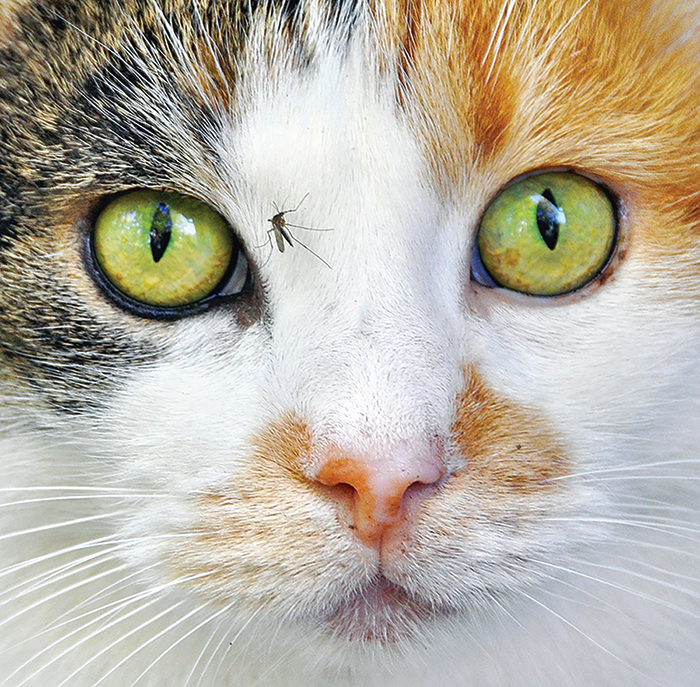
Zanna Pesnina | Shutterstock
Q. I adopted a precious cat, Figaro, from a rescue in July. Two months later, I came home to find him lethargic and having labored breathing. I took him to the emergency pet hospital where he was diagnosed with heartworm disease. My veterinarian informed me that the prognosis was not good. Since I brought him home, he has been totally normal: frisky, eating well (too much, in fact), playful, etc. He is taking prednisolone and his respiratory rate and efforts have been normal. They painted a bleak picture for Figaro, but I wondered if you might have any advice.
A. Thanks for getting in touch and I am very sorry to hear of Figaro’s problem. Feline heartworm disease has been reported in all 50 states, and although cats seem to be less prone to unfavorable outcomes than dogs when they are infected, some may experience negative outcomes ranging from mild respiratory distress to death, although the latter is much less common in cats than in dogs. In some cases, cats do not show significant signs of infection. Perhaps a brief review of feline heartworm disease would be helpful.
Heartworms are transmitted from one pet to another by mosquitoes that ingest first stage heartworm larvae (called microfilaria . . . think young worms) that are circulating in the blood of an infected pet while taking a blood meal from them and then introduce them to another pet when these mosquitoes subsequently bite them to take another blood meal. An important point is that the microfilaria that are initially ingested by the mosquito must develop (to what is called the third stage larvae) within the mosquito for some time before becoming infective for other pets.
Once the third stage larvae are introduced into a susceptible pet, they migrate from the site where they are bitten by the mosquito through the tissues of the body, ultimately finding their way to the heart (they are adults by this time) where they can reproduce to make new microfilaria that begin circulating in the bloodstream. These newly produced microfilaria can then be ingested by mosquitoes, thereby serving as sources of infection for other pets.
An interesting point is that dogs seem to be natural hosts for heartworms, while cats are likely not. For this reason, the number of adult worms that are found in the hearts of infected cats is usually much lower than in infected dogs. In most cats, the adults usually do not reproduce new microfilaria. For this reason, most cats that are infected do not serve as potential sources of infection for other pets (i.e., they have no microfilaria for mosquitoes to ingest).
It is the adult heartworms that cause the damage and inflammation to the blood vessels that bring blood from the heart to the lungs, and this damage is what causes clinical signs of disease, so the lower number of adult heartworms in infected cats usually means that infections are better tolerated in cats than they are in dogs.
Unlike in dogs, where treatment of heartworm disease involves giving drugs that kill adult heartworms (these drugs can be highly toxic to cats), the management of cats with heartworm disease usually involves supportive care, including the use of steroids like the prednisolone that Figaro is receiving to decrease the inflammation that can be caused in the blood vessels and lungs. Antibiotics may also be used to neutralize a species of bacteria (called Wolbachia) that live in the mouth parts of adult heartworms and that may contribute to inflammation that can cause problems in the lungs.
While cats can succumb to heartworm, they are much less likely to do so than dogs that are infected, so I’d suggest that you continue to work closely with your veterinarian to assure best care for Figaro while he recovers.
You can learn more about feline heartworm disease at the American Heartworm Society’s website at: https://www.heartwormsociety.org/pet-owner-resources/heartworm-in-cats
Best of luck, and please send us an update when you can.



